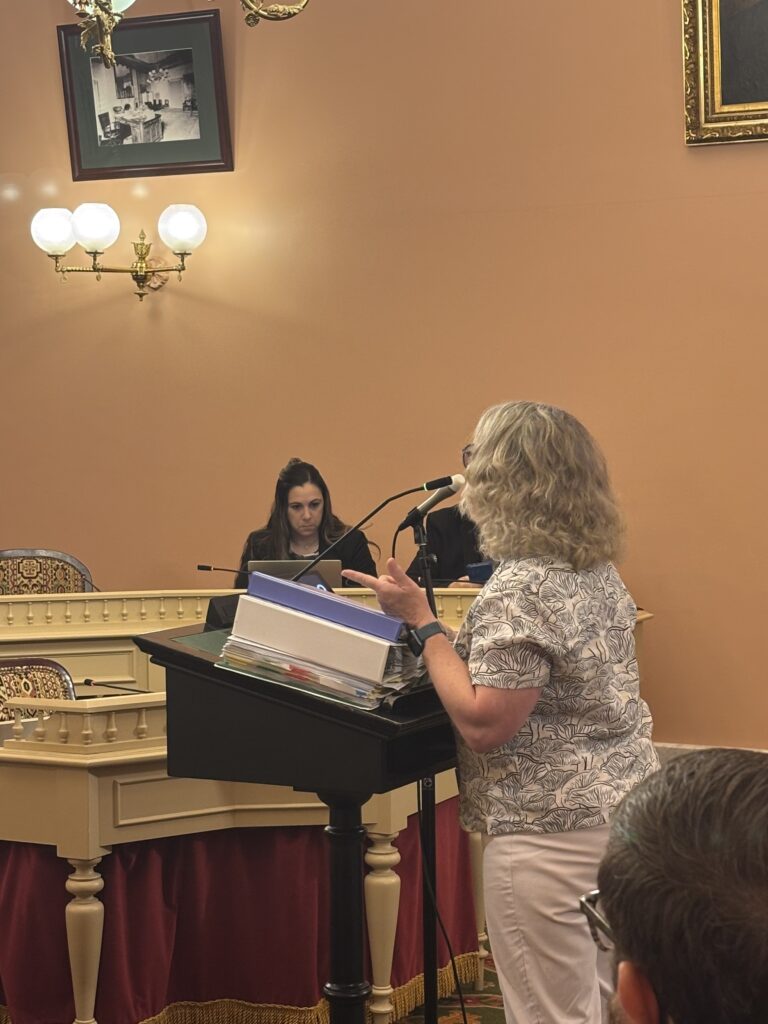Speakers raised concerns about property rights, safety risks, and CO2 pipeline impacts
May 12th, 2025 – Last week, residents from across the state spoke to the Ohio House of Representatives Natural Resources Committee in opposition to House Bill 170. If passed, this bill would clarify the regulatory environment for CO2 storage but also encroach on landowner
rights and expose communities to new risks. Ten community members spoke out against this bill and at least 18 people submitted written testimony urging legislators to not pass HB170.
CO2 storage is intended to reduce emissions from industrial facilities by storing this greenhouse gas in deep geologic formations for hundreds or thousands of years. However, the bill allows companies to store CO2 under homes and private property without the owner’s permission and prevents local governments from deciding whether or how CCS projects would operate in their communities.
“The legislation proposed provides setbacks establishing buffer areas to protect oil and gas interests from CO2 storage projects,” said Bev Reed, organizer with the Buckeye Environmental Network. “But there are no equal protections for environmental justice communities, schools, churches, parks, or other sensitive areas.”
Dr. Randi Pokladnik, a resident of Harrison County testified, “ You’re taking private property and you’re using it for an industry that doesn’t care about our area, doesn’t care about our citizens,” in reference to the “statutory consolidation” provision in the bill, which allows CO2
storage projects to advance without the approval of all affected landowners.
Mick Luber, a certified organic vegetable farmer from Harrison County said, “The carbon capture pipelines and injection wells would steal more land, create more threats for farmland, and create more risks for humans, animals, and vegetables.” Massive pipelines are likely needed to transport CO2 from large emitters to storage facilities. Leading estimates for the national pipeline network needed to transport CO2 range from 30,000 miles to 96,000 miles, a significant increase from the roughly 5,300 miles that exist today.
Committee chair Don Jones interrupted testimony from two speakers, claiming that the speakers were off-topic. Washington County residents Bob Lane and Bob Wilson discussed how radioactive wastewater from Class II injection wells contaminated some of their conventional oil and gas wells. CO2 storage projects require Class VI permits which, like Class II wells, are regulated through the Underground Injection Control program. Lane pointed to issues with Class II injection wells as an indication that the state may also experience issues with CO2 injection wells, which are much more complex and largely untested in the U.S.
Federal regulators are currently reviewing at least five applications for CO2 storage projects in Ohio, including two applications from Tenaska, the backer of the Tri-State CCS Hub. The Hub would impact Harrison, Carroll, and Jefferson counties in Ohio. This project consists of plans to build at least 24 CO2 injection wells in 80,000 acres of subsurface geology across Ohio, Pennsylvania and West Virginia. Several speakers raised concerns regarding the tens of thousands of orphaned and abandoned oil and gas wells which could allow CO2 to migrate outside of the project area, threatening drinking water supplies or potentially allowing the greenhouse gas to escape into the atmosphere.



From left: Dr. Randi Pokladnik, lifelong resident of the Ohio River Valley and Environmental Chemist, testifying against HB 170, Wednesday, May 7th, 2025. Center: Bob Lane, conventional gas and oil well owner describing how his Class II injection wells were impacted. Right: Map of some of the 36,000 oil and gas wells that exist in Ohio, shown to legislature during the hearing.
